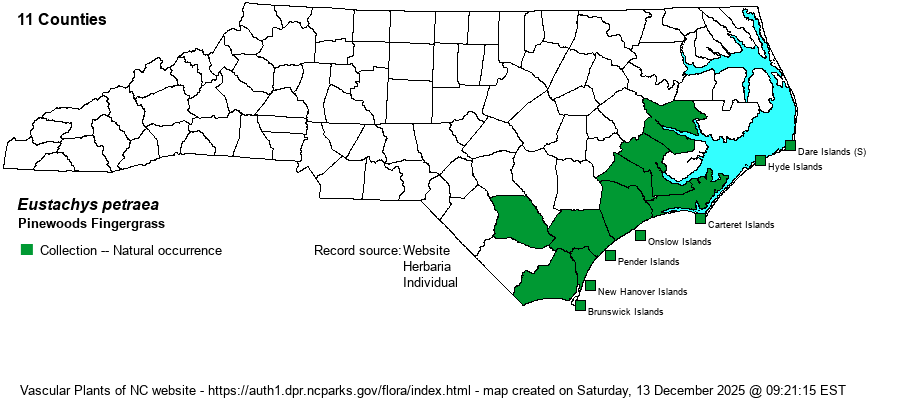| Author | (Swartz) Desvaux | |
| Distribution | Outer Banks, other barrier islands, and the outer Coastal Plain -- north to Beaufort County.
Coastal Plain, NC to southern FL and southern TX; Mex., C.A. | |
| Abundance | Uncommon to frequent, more numerous on barrier islands than on the mainland. | |
| Habitat | Maritime stable dunes, maritime dry grasslands, upper margins of brackish marshes, sandy roadsides. | |
| Phenology | Flowering and fruiting June-October. | |
| Identification | Eustachys species are superficially like crabgrasses (genus Digitaria), but the spikelets are laterally compressed (vs. hemispherical in cross-section). They are much like Chloris, but the upper glumes are truncate or 2-lobed (vs. acute) and the lowest lemmas have a very short awn or none (less than 1.2 mm long vs. up to 37 mm long). E. glauca differs in being much more robust and taller (2-4 feet) and having glabrous lemmas (vs. pubescent). That species grows mainly in salt or brackish marshes, but is now historical in NC. | |
| Taxonomic Comments | A synonym is Chloris petraea.
| |
| Other Common Name(s) | Dune Fingergrass | |
| State Rank | S3 | |
| Global Rank | G5 | |
| State Status | | |
| US Status | | |
| USACE-agcp | FACU link |
| USACE-emp | FACU link |

